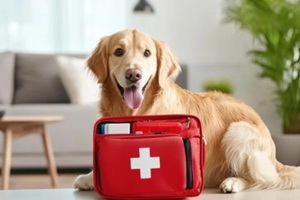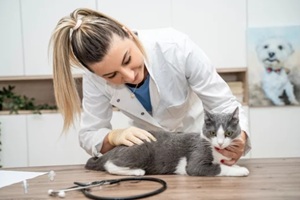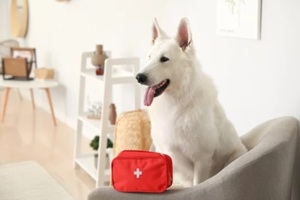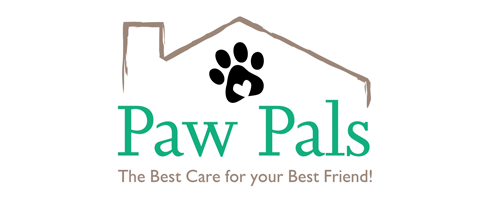 No pet owner wants to think about their beloved friend getting hurt, but the reality is that sometimes, accidents happen. The best thing an owner can do for their pet is to be educated and prepared for the possibility of an emergency, whether with the family or with a pet sitter.
No pet owner wants to think about their beloved friend getting hurt, but the reality is that sometimes, accidents happen. The best thing an owner can do for their pet is to be educated and prepared for the possibility of an emergency, whether with the family or with a pet sitter.
Even if an animal only suffers a minor injury that can be treated at home, it is helpful to be prepared to treat it immediately rather than scrambling to run to the store for supplies. However, it can be hard to visualize all the potential injuries a pet might experience.
Here are some suggestions for the main components of an at-home pet first-aid kid so that your furry friend gets the treatment they need as soon as possible.
Medical Supplies
For most injuries that can be addressed at home, a few basic supplies can get the job done:
- Absorbent gauze pads: These can control areas of bleeding or clean up a wound.
- Adhesive tape: Tape keeps gauze attached to the pet; try to avoid getting the adhesive on the animal’s skin or fur.
- Cotton balls or swabs: Use these for a more targeted method of cleaning scratches and cuts or applying ointments.
- Fresh 3% hydrogen peroxide: This is the standard option to induce vomiting in pets that have consumed something they are not supposed to. Always check with a veterinarian or animal poison control expert before inducing vomiting to make sure it is not causing more harm than good.
- Ice pack: This easily accessible inflammation reducer helps with swelling.
- Styptic powder: This fine powder is used to stanch bleeding; it is most commonly used on nails when the quick has accidentally been cut.
Keep in mind that the best option is sometimes to stabilize a wound and then go to the vet or an emergency clinic. These supplies can help to control bleeding or keep a laceration together en route to professional care.
Accessories
In addition to the medical equipment in a first-aid kit, be sure to include helpful accessories:
 Tweezers: These can be used to remove sharp objects such as thorns. Just be sure not to remove ticks this way, as it can cause further harm by squeezing the tick or detaching its head from its body.
Tweezers: These can be used to remove sharp objects such as thorns. Just be sure not to remove ticks this way, as it can cause further harm by squeezing the tick or detaching its head from its body.- Blunt scissors: Blunt scissors are ideal because they can help you avoid accidentally cutting your pet. They can be used to trim gauze and bandages.
- Towels: Towels can soak up bodily fluids or be used to keep a pet warm. They can also wrap around an ice pack or heat pack to help the animal stay comfortable when using these methods.
- Flashlight: Flashlights can help owners get a better view of injuries or potential problem spots. They are also useful if the animal needs to move during an emergency.
Emergency Information
In many cases, the best treatment is prevention. Not all cases of injury can (or should) be treated at home. In the event of an emergency, knowing what to do next can save precious minutes that may mean the difference between a favorable outcome and one less positive.
- Poison control: Always keep the number for pet poison control posted in a visible location, and include an additional copy in the pet first-aid kit. This way, the pet will not need to wait for treatment while the owner searches for poison control’s contact information.
- Veterinarian: Keep the phone number and address of the pet’s regular veterinarian within easy reach so that they can be contacted quickly.
- Emergency vet: In some instances, the pet’s trusted vet will not be equipped with the tools or knowledge to address specific injuries or acute illnesses. Keep the names, addresses, and contact information of at least two emergency vet clinics on hand. If one of them is at capacity, owners can reach out to the other.
- Emergency contact: Some emergencies may require the owner to reach out to a friend or family member for assistance. Alternatively, if the pet is being walked or cared for by someone else, they may not be able to reach the owner and should still have a secondary contact available. Leave this information in an easily accessible location.
Book a Northern Virginia First Aid Certified Pet Sitter
 Emergencies are never a welcome event for a pet owner, but being prepared ahead of time can make them much less stressful. It is important to create a first-aid kit, not just for yourself, but so that your pet sitter also knows which vets or emergency contacts to reach out to should your animal need help.
Emergencies are never a welcome event for a pet owner, but being prepared ahead of time can make them much less stressful. It is important to create a first-aid kit, not just for yourself, but so that your pet sitter also knows which vets or emergency contacts to reach out to should your animal need help.
The professionals at Paw Pals are certified in pet first aid and CPR, so you can trust us to handle unexpected accidents! Contact Paw Pals to set up a walking schedule or pet sitter appointment that will keep your furry friend safe.


